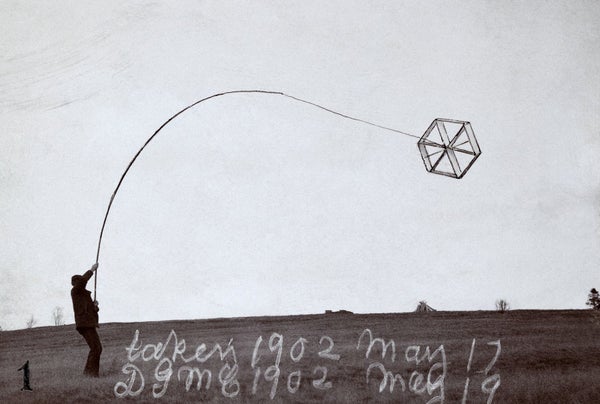When he was 29 years old, Alexander Graham Bell patented the telephone—a claim that is reportedly one of the most lucrative ever filed in the U.S. Patent Office. Not long after, the young inventor lost interest in the device and put his growing wealth toward other pursuits—such as giant kites capable of lifting people off the ground.
“It is fortunate for those interested in aeronautics and the exploration of the air that Professor Alexander Graham Bell has joined the band of experimenters and is lending his inventive genius to the cause,” wrote meteorologist Henry Helm Clayton, one of Bell’s admirers, in 1903. The goal of flying people on kites was hundreds of years old. But the late 19th- and early 20th-century work evolved directly into the planes we have today. A crucial step in the Wright brothers’ first successful powered flight in 1903 depended on their realization that a kite’s wings could be warped as the craft flew.
Bell and his team, called the Aerial Experiment Association, ultimately focused their kite designs on tetrahedrons, or pyramids made of four triangles, and biplane structures, several of which used red silk. When he died, Bell’s coffin was lined with the red silk.
On supporting science journalism
If you're enjoying this article, consider supporting our award-winning journalism by subscribing. By purchasing a subscription you are helping to ensure the future of impactful stories about the discoveries and ideas shaping our world today.
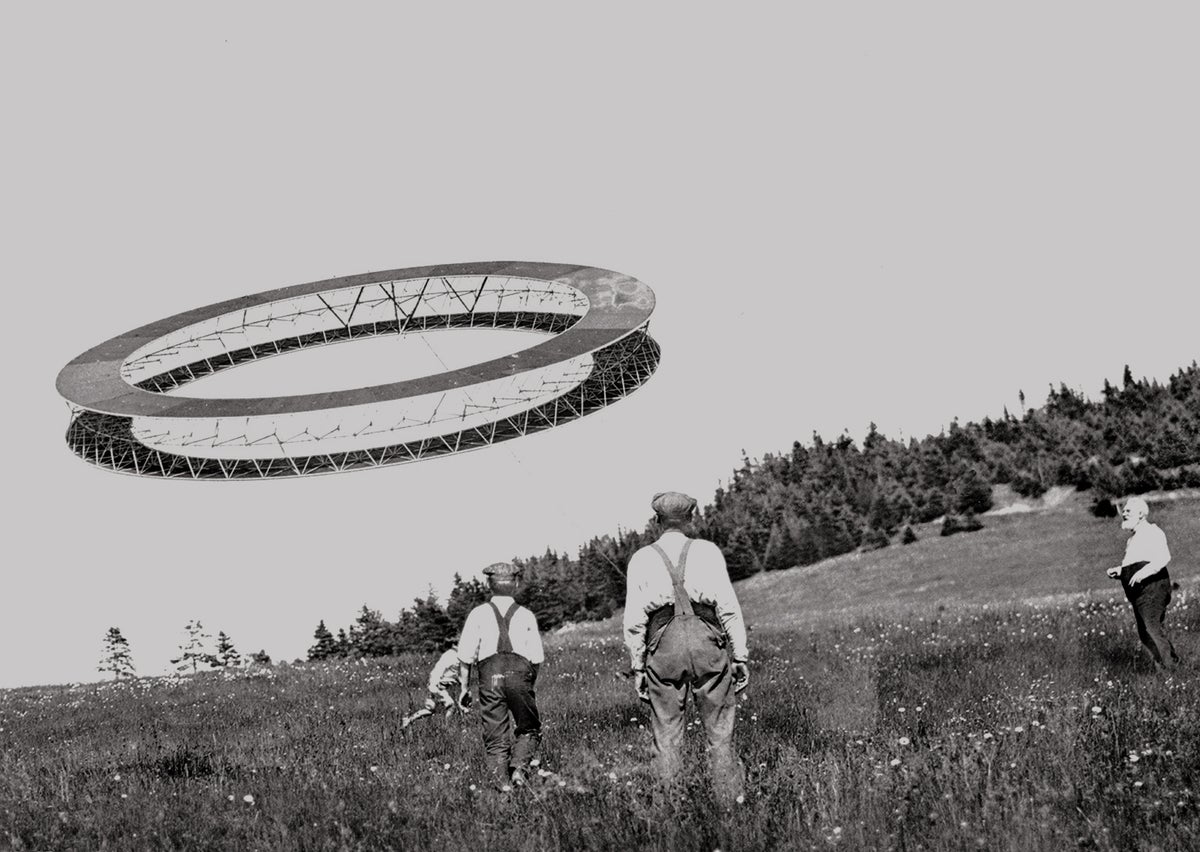
Credit: Alamy
Circular kite composed of smaller tetrahedral shapes that was built by Bell and his team. The triangular design helped the researchers disprove skeptics who thought kites composed of many identical structures could ever lift someone off the ground.
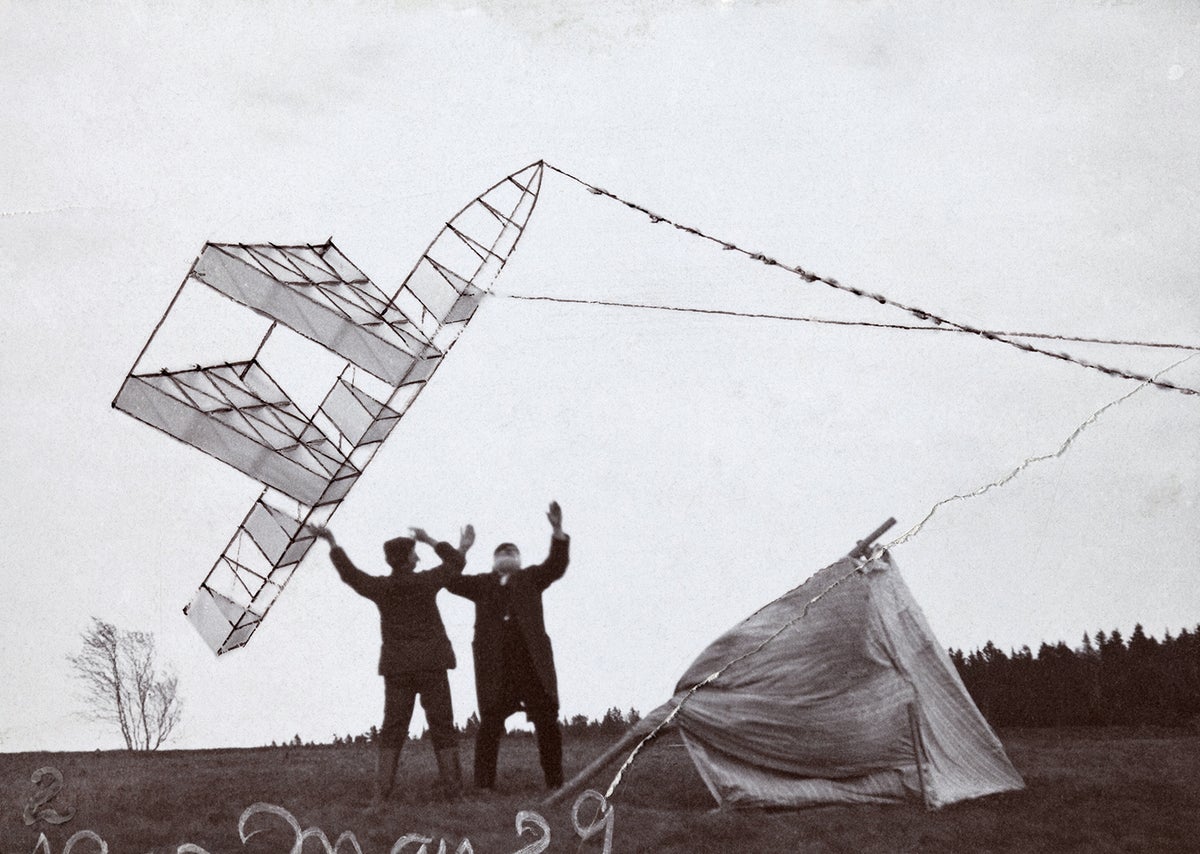
Credit: Bell Collection National Geographic
Bell kite composed of triangular sections. The original rectangular box kites needed internal bracing to keep their shape while flying, which added dead weight. Bell’s idea to use the stronger, self-bracing triangle shape made for durable but light kites.
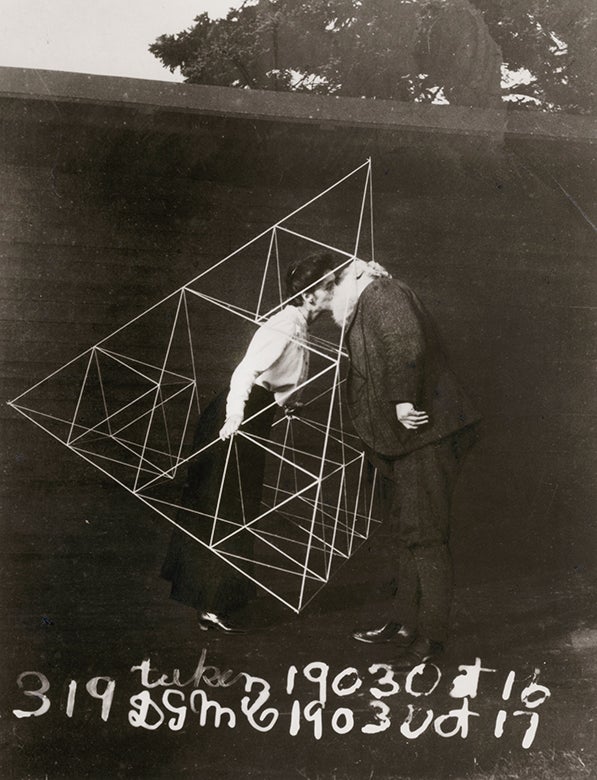
Credit: Library of Congress National Geographic
Alexander Graham Bell and his wife Mabel Bell kissing through a kite structure. Mabel Bell was integral to her husband’s work. She advocated for him to assemble the Aerial Experiment Association. She even sold a home she owned to front the costs of putting the group together.
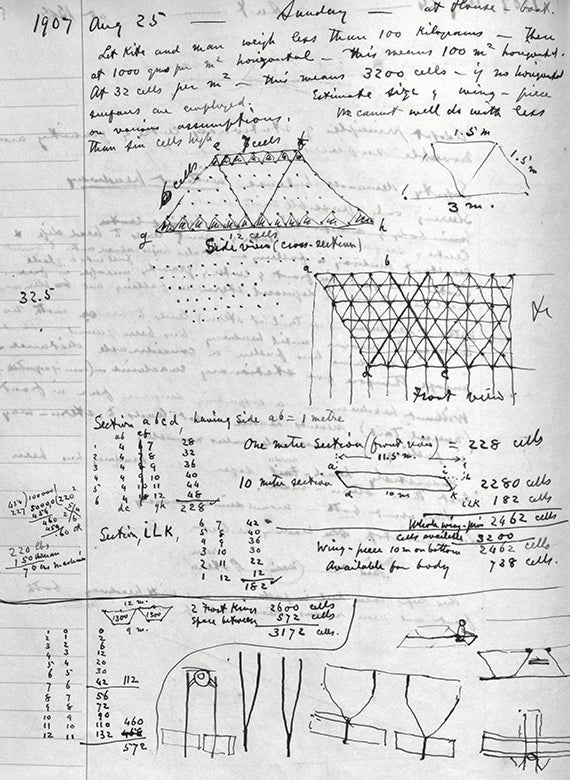
Credit: Library of Congress National Geographic
Alexander Graham Bell’s designs for tetrahedral kites, which grew large enough to hold a human aloft. One of his first passengers, Lieutenant Thomas Selfridge, later became the first person to die in an airplane accident when working with the Wright brothers.
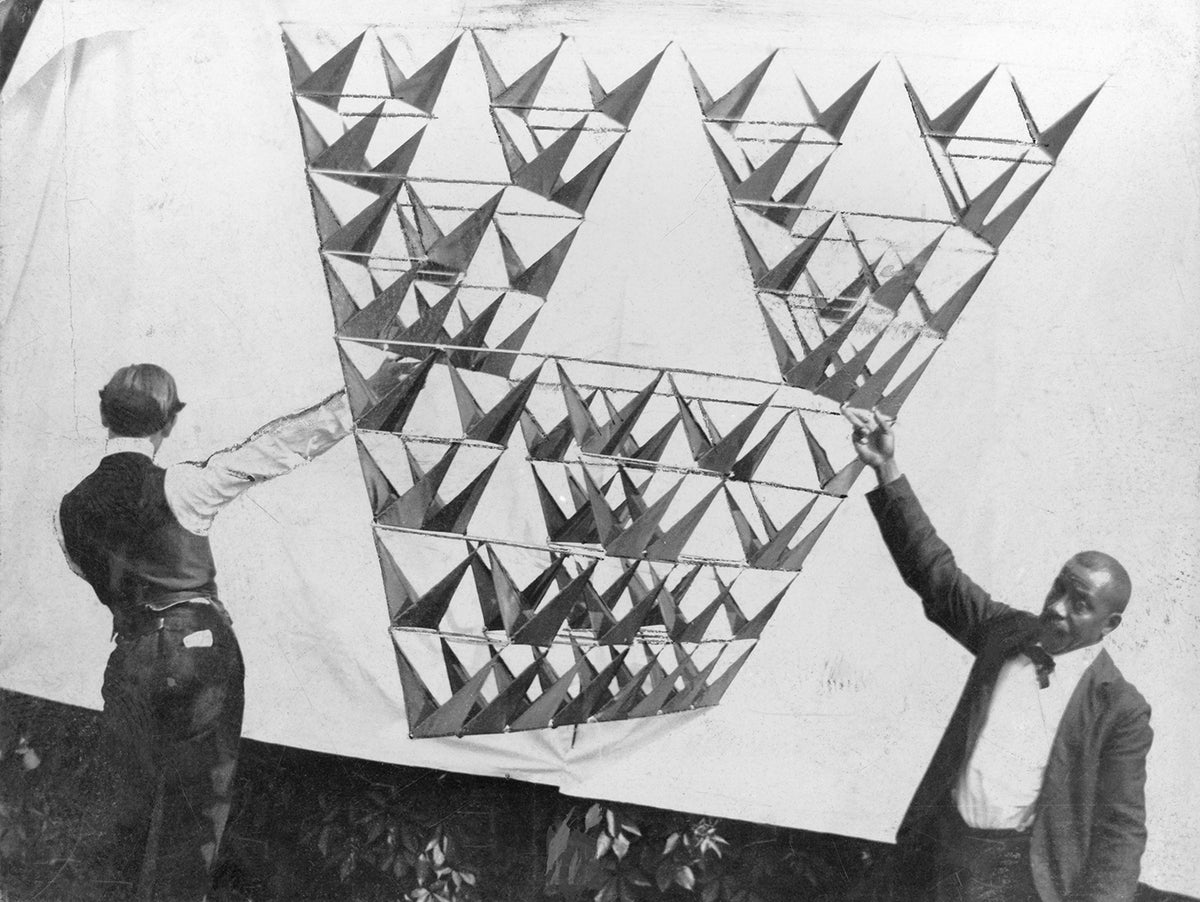
Credit: National Geographic
Tetrahedral kite. Unlike traditional rectangular box kites, Bell’s tetrahedral shape could make increasingly larger structures, such as this 64-celled model. Aggregated rectangles increased kite weight faster than they expanded wing surface area. Tetrahedrons kept the ratio nearly constant.
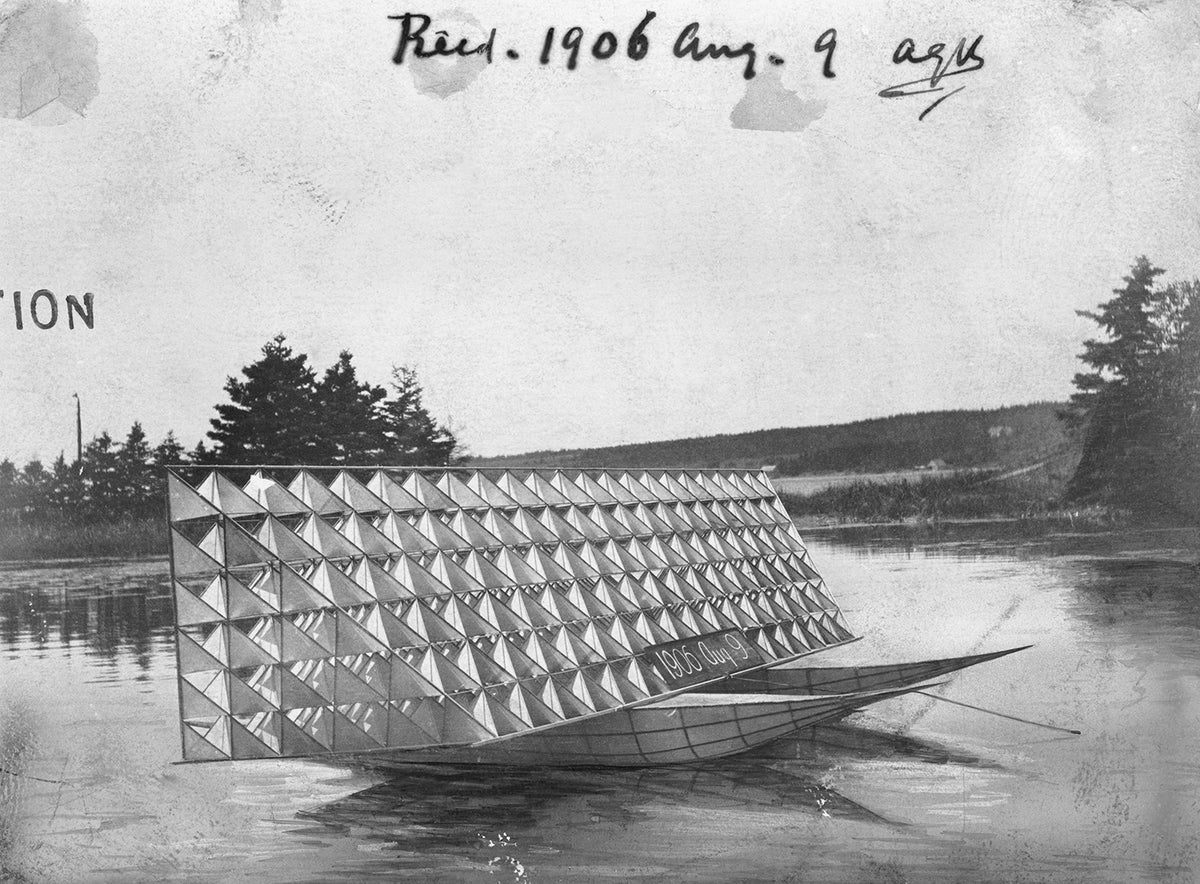
Credit: National Geographic
One of Bell’s tetrahedral kites, towed on water. With kites, taking off and landing, particularly with people onboard, were difficult parts of the flying process. Bell’s team thought that an aquatic runway would be less dangerous and launched a series of kites—Cygnet I, II and III—this way.
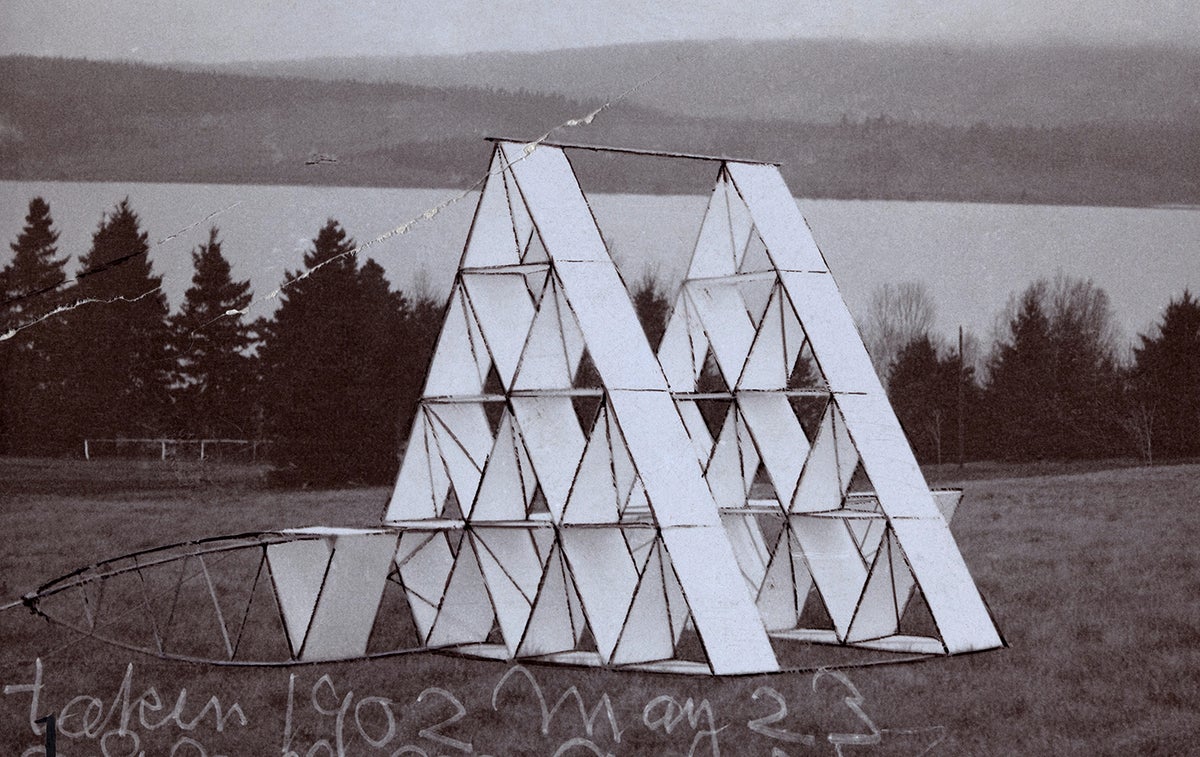
Credit: Bell Collection National Geographic
Bell team kite made of triangular cells. The researchers moved on from triangular to tetrahedral kites because of the design hurdle seen here. Triangle-based kites had to be arranged in two sections connected by wood—deadweight that tetrahedral designs avoided.
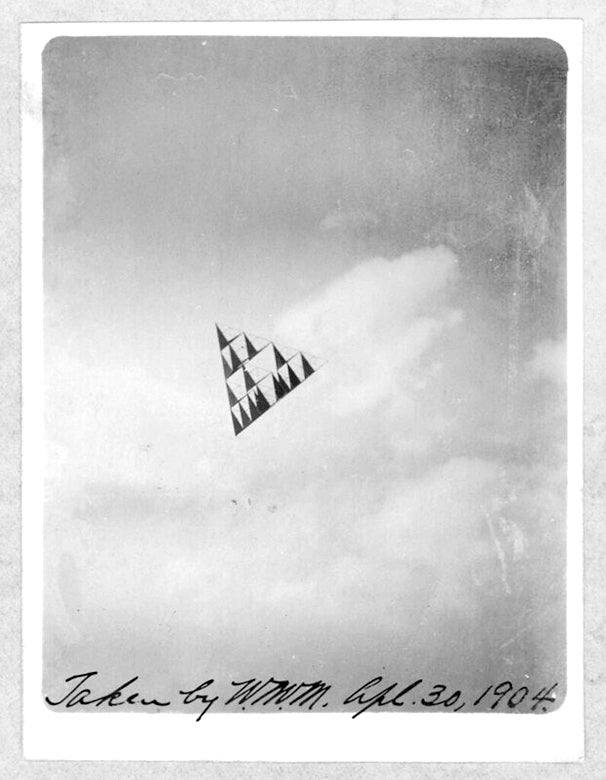
Credit: Public Domain Review
Relatively small tetrahedral kite in flight. The boom in kite innovation and subsequent engine-powered flight led to the founding of the National Advisory Committee for Aeronautics in 1915. The agency turned over its operations to NASA in 1958.
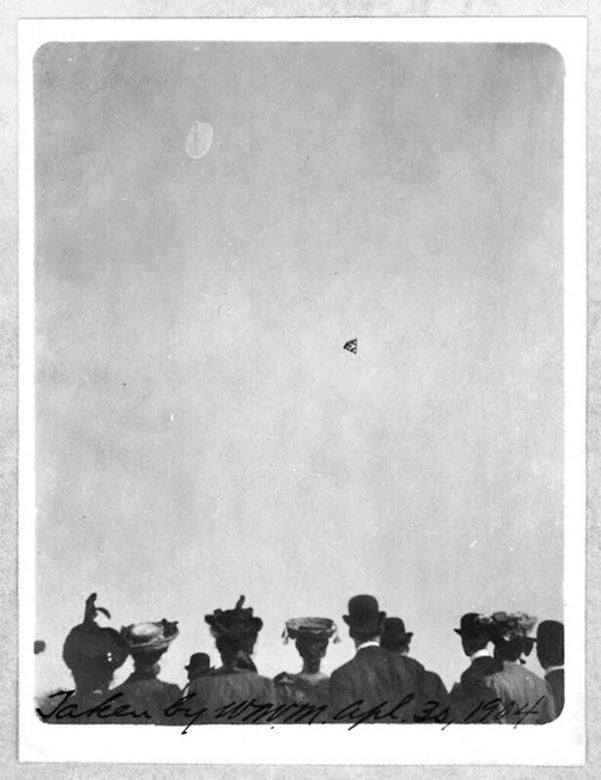
Credit: Public Domain Review
Onlookers watch a flight. Early flight researchers had rocky relationships with the public and press—a theme that extended to Robert H. Goddard, the inventor of the liquid-fueled rocket. Goddard first proposed launching such a rocket to the moon in 1920, which earned him heavy criticism from newspapers.
